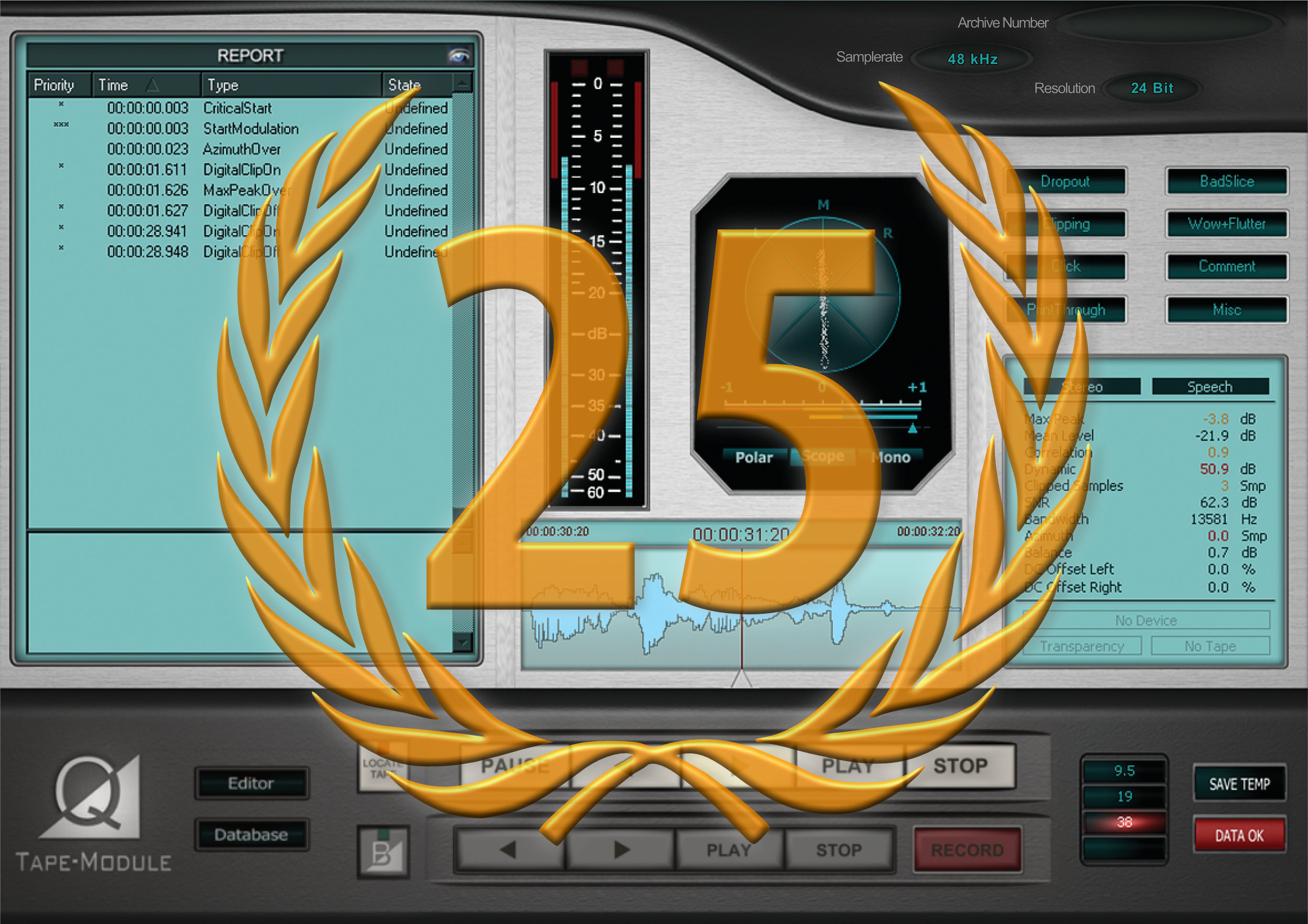25 years of Innovation – the QUADRIGA anniversary
QUADRIGA celebrates a milestone birthday - a historical outline in several parts

At the 5th Joint Technical Symposium (JTS) in Paris in January 2000, QUADRIGA was presented to the international archiving community for the first time! The theme of the JTS in Paris 2000 was: Image and Sound, Archiving and Access: the challenges of the 3rd Millennium.
For 25 years now, QUADRIGA has been the world's leading archive solution for the quality-controlled digitisation of large media collections. This is a significant contribution to the preservation of the world's audiovisual heritage with millions and millions of quality-assured digital copies. Now that's good news!
To mark the anniversary, we look back at the milestones in the QUADRIGA success story and take a look at the forward-looking developments that continue to characterise the product.
Part 1: QUADRIGA: The Beginning

QUADRIGA•Audio emerged at the end of the 1990s from an intensive collaboration between the Institut für Rundfunktechnik (IRT) - the former research institute of all German public broadcasters - and a young team of dedicated Cube-Tec engineers. The result was something new, a special hardware and software solution to transfer the hundreds of thousands of archive tapes stored in the individual broadcasting organisations into the digital domain.
Until then, there had only been universal products for sound recording and editing. Now, for the first time, there was an optimised product with a specially adapted workflow for digitising large audio tape archives as efficiently and with as few errors as possible. And QUADRIGA automatically generates a detailed inspection report for each individual digitised file.
In 1998, the development work was completed and the first dedicated archiving workstation saw the light of day - QUADRIGA was born! QUADRIGA is an acronym that stands for QUality from Analogue to Digital RIGorously Analyzed. Originally, QUADRIGA was a registered trademark of IRT, which was exclusively licensed to Cube-Tec. Later, Cube-Tec took over the full rights to the name.
To ensure the long-term accessibility of metadata in archived sound files, Cube-Tec engineers have worked intensively with Siegbert Herla from IRT on the EBU standardisation of the Broadcast Wave Format (BWF).
Thanks to its technical superiority and ease of use, QUADRIGA was welcomed with open arms by the worldwide archive community. By March 2001, the first 24 QUADRIGA systems had already been installed at customer sites in Australia, Austria, Finland, Germany, Ireland, Luxembourg, Switzerland and the USA.
Many institutions, including broadcasting organisations, national archives, educational establishments and magnetic media archives had opted for the QUADRIGA platform by this time. In the broadcasting sector, 7 QUADRIGA systems were installed at Bayerischer Rundfunk (BR) in Germany alone and QUADRIGA was also implemented at Südwest Rundfunk (SWR), Norddeutscher Rundfunk (NDR) and Radio Bremen. Further systems have been installed at RTE in Ireland, Swiss Broadcasting (SRI), Finnish Broadcasting (YLE) and Austrian Broadcasting (ORF).
Due to the significant commitment of German broadcasters to the QUADRIGA platform, systems were installed at both the School of Broadcast Technology (SRT) and the Institute of Broadcast Technology (IRT) so that sufficient archive staff could be trained in the new technology. In addition, national archives such as the Centre National de l'Audiovisuelle (CNA) in Luxembourg and NFSA in Australia also chose the QUADRIGA platform. In the USA, VidiPax - a pioneer in the field of video archiving - ordered a QUADRIGA system in order to expand its range of services to include audio archiving.
QUADRIGA•Audio enables the automatic monitoring and recording of both analogue and digital audio data whose technical parameters are important for archiving. For example: audio drop-outs, clipping, clicks, splice identification and analysis, azimuth/phase, etc. QUADRIGA•Audio automatically recognises if audio data cannot be recorded or saved properly, so that data loss can be checked immediately and the causes eliminated.
That was just the beginning... but what happened next?

